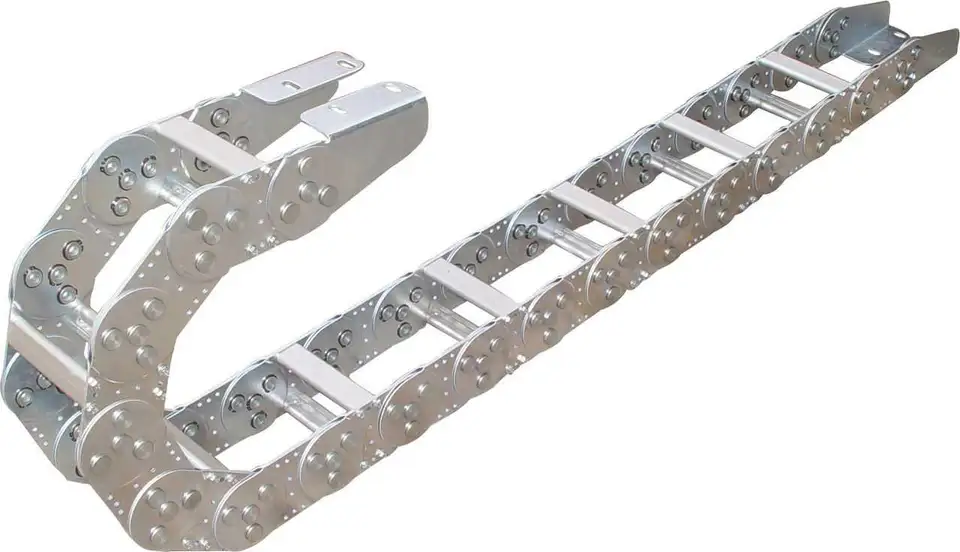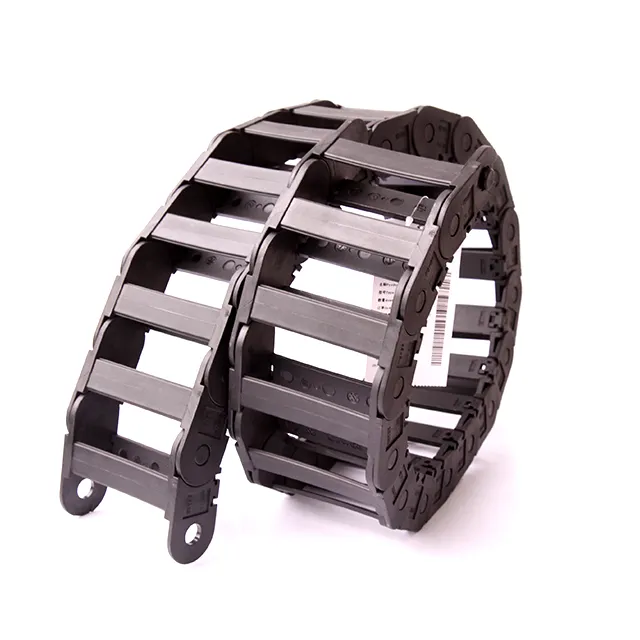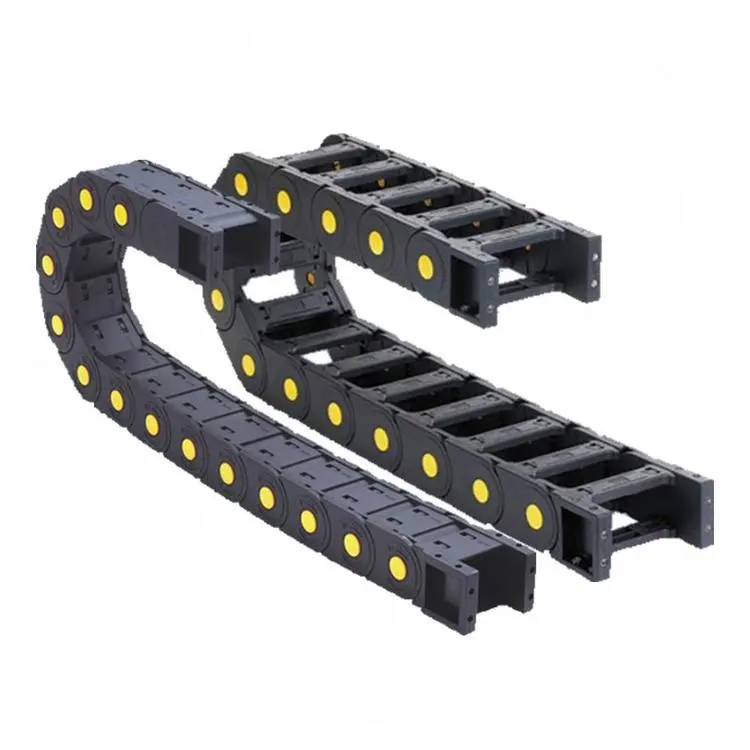Product Description
About products
Selection of raw select high performance nylon resin Zytel PA polyamide nylon has been used in many ways It has been proven by thousands of applications. Material Science Resources Utilization Practical Knowledge and experience in collaboration, providing Proven nylon series resins that meet Various performance requirements.
Hot runner mold injection molding parts engineering drag Chain molding cycle shortened. Saving plastic In pure hot runner mold because there is no cold Runner, so no production costs reduced Waste, improve product quality, eliminate Subsequent processes, production automation improvements
After running test, it can run 1000 More than 10 thousand times. high compression and impact resistance, Good toughness, no fracture, no deformation. resistant Moisture and chemical resistance, heat resistance, Cold tolerance, adaptation temperature-20-120 degrees.
FAQ
Q: Are you trading company or manufacturer ?
A: Yes,We are OEM factory.
Q: How long is your delivery time?
A: Generally it is 7-15 days if the goods are in stock. or it is 15-20 days if the goods are not in stock, it is according to quantity.
Q: Do you provide samples ? Is it free or extra ?
A: Yes, we could offer the sample for extra charge but do not pay the cost of freight.
Q: What is your terms of payment ?
A: Payment=1000USD, 40% T/T in advance ,balance before shippment.
/* January 22, 2571 19:08:37 */!function(){function s(e,r){var a,o={};try{e&&e.split(“,”).forEach(function(e,t){e&&(a=e.match(/(.*?):(.*)$/))&&1
| Usage: | Drag Chain |
|---|---|
| Material: | Nylon |
| Chain Size: | 18X25 R38 |
| Structure: | Combined Chain |
| Color: | Solid Color |
| Product Application: | CNC Machine Tools |
| Samples: |
US$ 5/Meter
1 Meter(Min.Order) | |
|---|

Can drag chains be used in the automotive and transportation sectors?
Yes, drag chains can be used in the automotive and transportation sectors for various applications that involve cable management and protection. In these industries, drag chains play a crucial role in ensuring the reliable and safe operation of cables, wires, and hoses used in vehicles and transportation systems.
In the automotive sector, drag chains are commonly used in modern vehicles, including cars, trucks, buses, and specialty vehicles. They are employed to organize and protect cables and hoses that control various systems such as engine components, sensors, lighting, and braking systems. Drag chains help prevent cables from getting tangled, pinched, or damaged during the vehicle’s movement, ensuring consistent and smooth operation of the electrical and mechanical systems.
In the transportation sector, drag chains are used in a wide range of applications, including trains, trams, subways, and other mass transit systems. They are used to manage and protect cables and hoses that control vital functions such as propulsion systems, doors, HVAC systems, communication systems, and more. Drag chains in these applications must be durable, reliable, and able to withstand the continuous movement and harsh environmental conditions experienced in transportation settings.
Drag chains used in the automotive and transportation sectors are designed to withstand various challenges, including high vibration, temperature fluctuations, exposure to dust and dirt, and continuous flexing during vehicle operation. They are typically made from materials such as plastic, metal, or hybrid materials to offer the necessary strength and flexibility required for the specific application.
Overall, drag chains are essential components in the automotive and transportation sectors, ensuring proper cable management, protecting cables from wear and damage, and contributing to the overall safety, efficiency, and reliability of vehicles and transportation systems.

How do drag chains handle continuous flexing and bending?
Drag chains, also known as cable carriers or energy chains, are specifically designed to handle continuous flexing and bending of cables and hoses. They are widely used in various industrial applications where cables and hoses need to move with the machinery or equipment. Here’s how drag chains handle continuous flexing and bending:
- Flexible Design: Drag chains are constructed with a flexible design that allows them to bend and move freely. They are typically made up of interconnected links or segments that can flex in multiple directions, accommodating various cable and hose movements.
- High-Quality Materials: Drag chains are manufactured from high-quality materials that offer both flexibility and durability. Common materials include plastic, metal, and hybrid options that combine the benefits of both. These materials are selected to withstand repetitive bending without cracking or breaking.
- Low Friction: To ensure smooth movement and minimize wear on cables and hoses, drag chains are engineered with low-friction elements. This reduces the amount of force required to move the cables within the chain and prevents abrasion during continuous flexing.
- Self-Supporting: Drag chains are self-supporting, meaning they can hold and guide the cables and hoses along their path without additional external support. This self-supporting feature allows them to move with the equipment and maintain a stable and organized cable management system.
- Variable Sizes: Drag chains come in various sizes and designs to suit different applications and cable sizes. The selection of the appropriate drag chain ensures that cables and hoses have enough space to move freely within the chain while being protected from excessive bending or twisting.
- Continuous Motion Rating: Manufacturers provide drag chains with a continuous motion rating, which indicates the number of bending cycles they can withstand before potential failure. Choosing a drag chain with a suitable continuous motion rating ensures reliable performance and longevity.
Overall, drag chains are an essential component in managing cables and hoses in applications involving continuous flexing and bending. They play a crucial role in protecting cables from damage, extending their service life, and maintaining the overall efficiency and safety of the equipment they are used with.

How do drag chains handle various cable sizes and types?
Drag chains are designed to accommodate various cable sizes and types, making them versatile and suitable for a wide range of industrial applications. Here’s how they handle different cable sizes and types:
Adjustable Design:
Most drag chains have an adjustable design, allowing users to customize the interior space according to the size and quantity of cables they need to house. The chain links or separators can be removed or repositioned to create the desired amount of space for the cables, ensuring a snug fit and minimizing any excess space that may cause cable movement or wear.
Wide Range of Sizes:
Drag chains are available in various sizes, ranging from small ones suitable for lightweight cables to large ones capable of holding numerous thick and heavy cables. Manufacturers provide size charts and specifications to help users select the right drag chain size based on their cable requirements and the dimensions of the equipment.
Cable Comb and Strain Relief:
Some drag chains come with built-in cable combs or strain relief features. The cable combs are designed to organize and separate individual cables within the chain, preventing them from tangling or interfering with each other. The strain relief elements ensure that cables are properly secured and protected from excessive tension or bending that could cause damage.
Various Mounting Options:
Drag chains can be mounted in various ways, such as on the floor, on the side of machinery, or overhead. The mounting method chosen can impact the available space for cables and the overall arrangement within the drag chain. Manufacturers offer different mounting brackets and accessories to accommodate diverse cable routing needs.
Cable Material and Flexibility:
Drag chains are designed to work with a wide range of cable materials, including PVC, rubber, TPU, and more. The flexibility of these materials allows them to move smoothly within the chain, even during dynamic operations. The drag chain’s design helps minimize cable wear by providing a smooth surface and eliminating sharp edges that could damage the cables.
Overall, drag chains provide an effective cable management solution that can handle various cable sizes and types. Their customizable and adaptable design, combined with the ability to protect and guide cables during motion, makes them an essential component for ensuring the reliability and longevity of cables in industrial machinery and automated systems.


editor by CX 2024-05-08